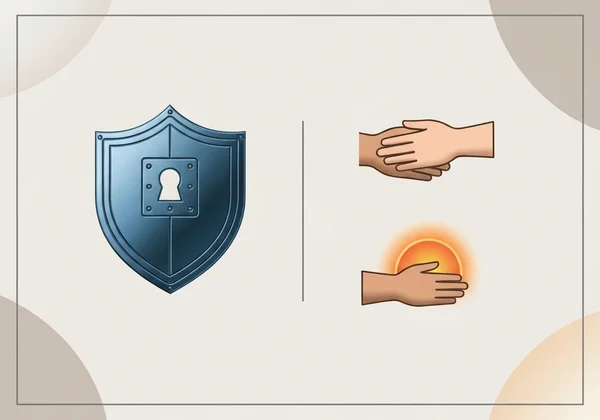BDSM Roles & Dynamics: Your Ultimate Kink Test Companion
So you've taken the kink test and are curious about what your results truly mean? Or perhaps you're just starting your journey into understanding sexual preferences and BDSM. What are the different types of BDSM roles? From a psychological perspective, exploring our desires is a profound act of self-discovery. This ultimate guide will demystify the wide array of BDSM roles and dynamics, providing the context and clarity you need to understand yourself and the diverse world of kink. Let's unlock your unique desires together and discover your results.

Understanding BDSM Roles: Who's Who in Kink Exploration
Before diving into specifics, it's helpful to think of BDSM roles not as rigid boxes but as archetypes or energetic expressions. They are frameworks that people use to explore power, trust, and pleasure in a consensual way. Your results on a sexual preference test can point toward which of these archetypes resonate most with you, but they are simply a starting point for a much deeper and more personal exploration.
The Power Players: Dominant, Master, and Mistress Defined
At the heart of many BDSM dynamics is a power differential, consensually given and received. The roles of Dominant (Dom), Master, or Mistress are held by the individual who takes on the position of authority. This isn't about control in a negative sense; it's about shouldering responsibility, providing structure, and guiding an experience for a partner. A Dominant enjoys leading and setting the tone, while a Master or Mistress often implies a deeper, more committed dynamic with a specific set of protocols and expectations. Psychologically, these roles can be incredibly empowering, offering a space to express leadership, creativity, and care.
The Consenting Partners: Submissive, Slave, and Pet Archetypes
On the other side of the dynamic are the roles of the submissive, slave, and pet. It is a common misconception that these roles are about weakness. In reality, choosing to submit requires immense strength, trust, and self-awareness. A submissive (sub) finds pleasure and freedom in relinquishing control to a trusted Dominant. The term 'slave' often signifies a more profound level of devotion and service within a dynamic, while 'pet' introduces an element of playful regression or animalistic persona (pet play). Each of these roles is an active choice, a way to explore vulnerability and trust in a safe, contained environment.

Dynamic & Specialized Kink Roles: Rigger, Switch, and More
The world of kink is far richer than just two opposing roles. Many people identify with more specialized or fluid archetypes. A 'Switch' is someone who enjoys both dominant and submissive roles, sometimes in the same scene, sometimes with different partners. This reflects a psychological flexibility and a desire to explore power from all angles. A 'Rigger' is a specialist in rope bondage, whose role is a blend of artistry, technical skill, and deep trust. Other roles like 'Daddy/Mommy' or 'Brat' add layers of roleplay and psychological interaction. To find out where you might fit in this beautiful spectrum, you can explore your role.
Exploring Types of BDSM Dynamics: How Kinks Interact
Roles don't exist in a vacuum; they come to life within a 'dynamic,' which is the agreed-upon structure of a relationship or interaction. Understanding these dynamics is key to interpreting your kink test results and figuring out what kind of connection you might be seeking.
D/s (Dominance & Submission): The Foundational Power Exchange
D/s is perhaps the most well-known dynamic. It is a broad term for any relationship where one person consensually takes on a dominant role and the other a submissive one. This can be for a short scene, for the duration of a sexual encounter, or as an ongoing part of a relationship. The key element is the conscious and consensual exchange of power for mutual pleasure and fulfillment.
M/s (Master/Mistress & Slave): Deeper Bonds and Dedication
While D/s can be fluid, M/s (or Ma'am/sir) dynamics often imply a higher level of commitment and a more defined structure. This dynamic is typically characterized by a deeper emotional bond, established rules or protocols, and a sense of ownership given by the slave to the Master or Mistress. It is a profound expression of devotion and trust that extends beyond casual play.
TPE (Total Power Exchange): Living the Dynamic 24/7
TPE is a dynamic where the power exchange is not limited to scenes or the bedroom but is integrated into every aspect of life, 24/7. This is the deepest level of commitment in BDSM and requires an extraordinary amount of communication, negotiation, and trust between partners. While not for everyone, for those who practice it, TPE offers a unique structure for life and relationships. Understanding where you are most comfortable can start when you understand your dynamics.

Beyond Traditional Labels: Other Kink Archetypes and Interests
The BDSM community is incredibly diverse, and your own journey of desire may lead you beyond traditional D/s labels. The goal of a tool like the kink test is not to label you but to give you a language to explore what excites you.
The "Vanilla" Spectrum: Where Curiosity Often Begins
If your test results didn't show strong inclinations toward any specific kink, that is perfectly normal and valid! Many people identify as "vanilla" or "kink-curious." This doesn't mean you lack desire; it simply means your preferences may lie in different areas, or you're at the very beginning of your exploration. Curiosity is the only prerequisite for self-discovery, and every journey starts with a single step.
Exploring Specific Fetishes and Unique Kink Preferences
Sometimes our desires are not centered on power dynamics but on specific objects, materials, or scenarios. This is the realm of fetishes. A fetish might be an intense attraction to latex, feet, or a particular type of clothing. While distinct from BDSM roles, fetishes often overlap and can be incorporated into BDSM dynamics to create a richer experience. The goal is always to understand and embrace what makes you unique.
Understanding Kink Fluidity: Why Your Desires Can Evolve
One of the most important things to remember is that our desires are not set in stone. Just as our personalities evolve, so can our kinks. You might find that what excites you today is different from what excited you a year ago. This is a sign of healthy personal growth. It's why revisiting your curiosities and periodically checking in with yourself through tools like a retake the test can be so insightful.
Safety, Consent, and Communication: The Pillars of Healthy Kink
No exploration of BDSM is complete without an emphatic focus on its foundational principles. These are not just guidelines; they are the ethical bedrock that makes this exploration safe, sane, and rewarding for everyone involved.
The Golden Rules: Safe, Sane, Consensual (SSC) & Risk-Aware Consensual Kink (RACK)
SSC is the classic mantra: all activities must be safe, everyone involved must be of sound mind, and everything must be enthusiastically consensual. RACK is a more modern framework that acknowledges some activities have inherent risks. It emphasizes that all parties should be aware of and consent to those risks, taking steps to mitigate them.
Negotiating Boundaries and the Power of Safe Words
Clear communication is paramount. Before any play, partners should negotiate clear boundaries, discussing likes, dislikes, and hard limits. A safe word is a crucial tool—a pre-agreed-upon word or signal that immediately stops all activity, no questions asked. It ensures that the person in the submissive role always retains ultimate control.
Aftercare: Nurturing Emotional Wellbeing Post-Scene
What happens after a scene is just as important as the scene itself. Aftercare is the process of emotionally and physically reconnecting with your partner and yourself. It can involve cuddling, talking, sharing a snack, or simply being present. This practice helps manage the intense emotions that can arise during play and reinforces the bond of trust between partners. You can learn more as you start exploring safely.

Your Journey of Self-Discovery Continues with Kink Test
Understanding BDSM roles and dynamics is a journey into the psychology of desire, power, and trust. Whether you identify as a Dominant, a submissive, a Switch, or are just beginning to explore, remember that your path is your own. These labels are tools for understanding, not prisons for identity.
The most important step is the one you take toward knowing yourself better. If you haven't already, or if you feel your desires have evolved, now is the perfect time. Take the free kink test today to gain personalized insights into your unique profile. Embrace your curiosity and unlock your desires in a safe, private, and non-judgmental space at KinkTest.net.
Common Questions About Kink & BDSM Roles
What exactly are kinks, and how are they different from fetishes?
A kink is a broad term for unconventional sexual tastes or desires. BDSM is a category of kinks focused on power dynamics. A fetish is more specific, referring to a sexual fixation on a particular object, body part, or situation. A fetish can be a kink, but not all kinks are fetishes.
How common is it to have a kink or be interested in BDSM?
It's far more common than you might think. Studies have shown that a significant portion of the population has fantasies or interests related to BDSM and other kinks. Curiosity about one's sexuality is a natural and healthy part of being human.
What are the most common types of BDSM roles and dynamics?
The most widely recognized roles fall into the Dominant/submissive spectrum. Dynamics like D/s (Dominance/submission) are very common, as are interests in specific activities like bondage or impact play. The best way to discover what's common for you is to explore with a tool like our free bdsm test.
Is it normal for my sexual preferences or kinks to change over time?
Absolutely. This is a very common experience. Our desires can shift due to life experiences, new relationships, or simply personal growth. This fluidity is normal and healthy, reflecting our capacity to evolve as individuals.
How can I talk to my partner about my BDSM roles or kink interests?
Choose a calm, private moment where you won't be interrupted. Approach the conversation with honesty and openness, focusing on your feelings and desires using "I" statements. Sharing the results of a kink test can be a great, neutral way to open the door to this important conversation.